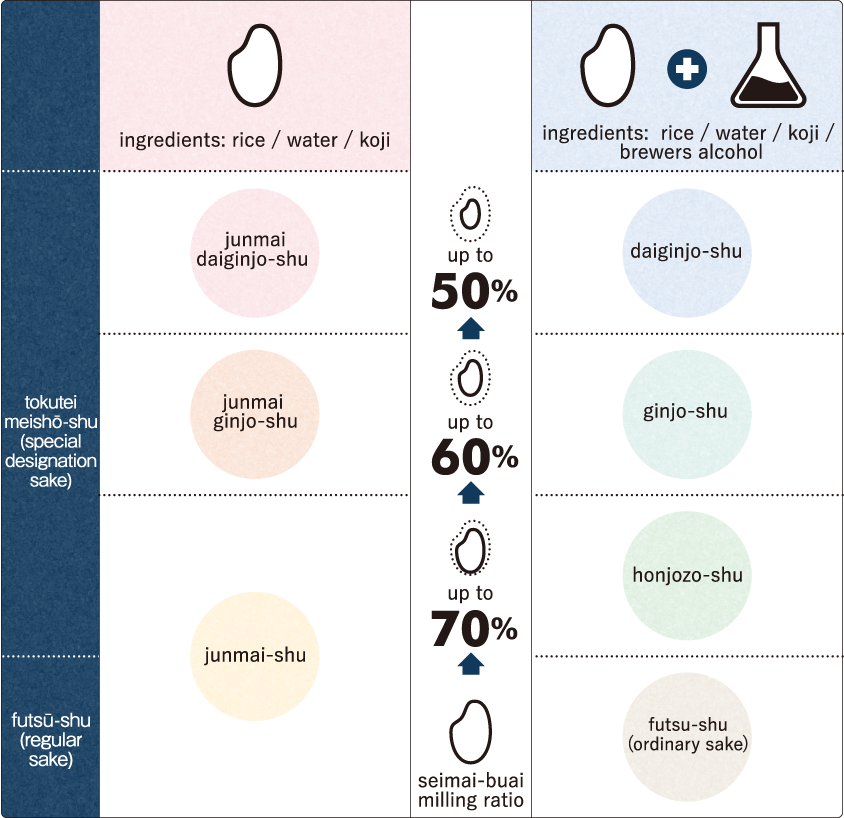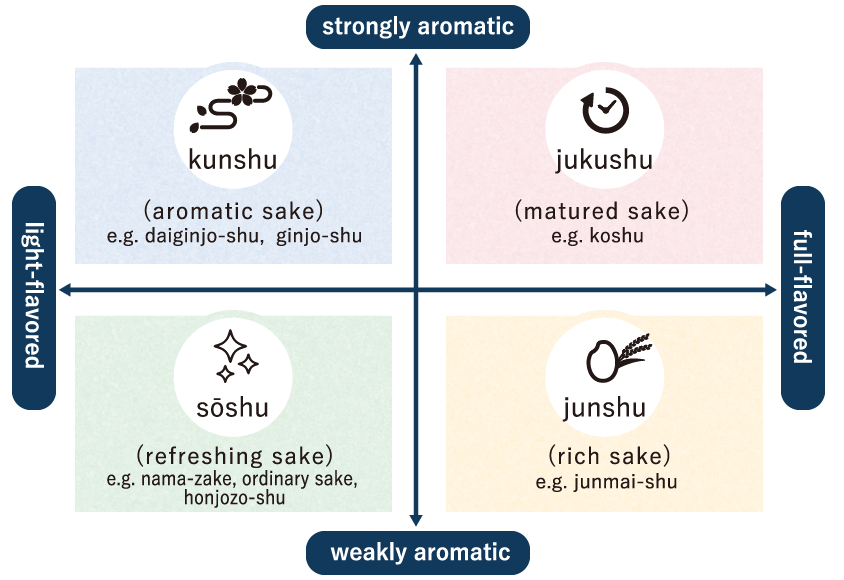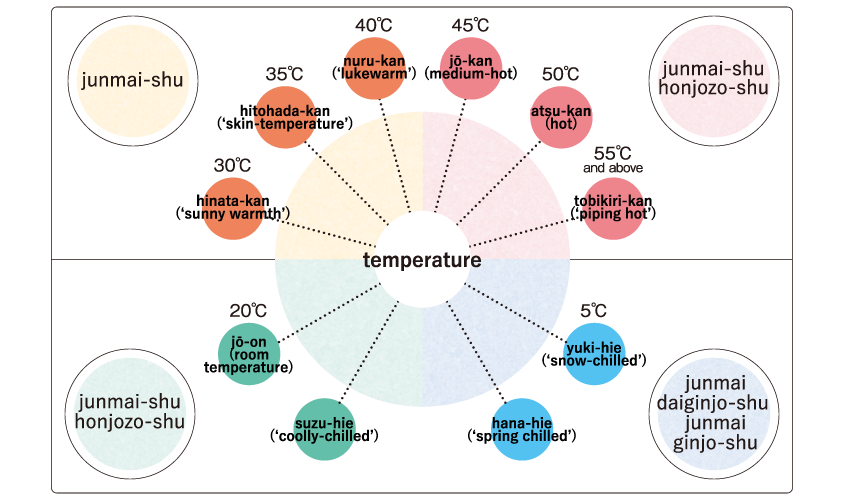About Sake
ABOUT SAKE
Types of Japanese Sake
Types and grades of sake are determined by two basic factors- the amount of milling on the raw rice kernels (known as seimai-buai), and whether or not distilled alcohol is added to the sake. Generally speaking, the higher the seimai-buai (i.e. the more the rice is milled), the clearer and more pure the finished product.

Characteristics and Varieties
Aside from the various types of special-designation sake,
sake can be classified into a number of other types based on brewing methods and styles.
Genshu
Genshu is undiluted sake. Unlike most sake, which is diluted with water after brewing, rich genshu retains an alcohol content of around 20%.
Nigorizake
Nigorizake (cloudy sake) is filtered through a looser fibre than regular sake, so it retains a certain white cloudiness and the rich flavors of rice.
Nama-zake
Nama-zake is sake that is unpasteurised. It has a fresh, fruity flavor, but a shorter shelf life than other sake.
Koshu (aged sake)
Koshu is sake that has been aged for at least three years. It has a rich, smooth flavor.
Kimoto
Kimoto is the name for sake made with the traditional yamaoroshi method, in which the rice is ground into a mash before adding specialised yeast for fermentation.
Yamahai
Yamahai sake is brewed with the same yeast as kimono, though without grinding the rice grains.
A Guide to Choosing Sake
Finding your preferences
Japanese sake boasts an extensive and complex flavor range, but don’t be put off by the terminology.
Finding the perfect drop for you is just a matter of tasting across a range.
The aromas, flavors and palates of sake can be categorised into four basic groups.

Guide to Enjoying Sake
Temperature is key
Japanese sake exhibits a huge range of flavours and aromas depending on the temperature at which it is served.
There are ten basic levels of serving temperature, so you can be quite discerning in finding the perfect one for your palate.

junmai-shu
a relaxed warmth brings out the distinctive mellow notes of quality Japanese sake
junmai-shu
honjozo-shu
Spiciness of junmai-shu is intensified, boldness of honjozo-shu is heightened, flavours linger on the palate
junmai-shu
honjozo-shu
enhances the richness and softness of traditionally-brewed sake such as yamahai or kimoto
junmai
daiginjo-shu
junmai
ginjo-shu
brings out the aromatic, fruity notes of sake
